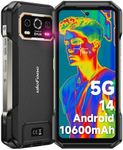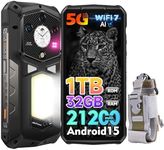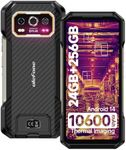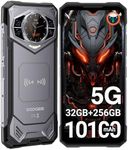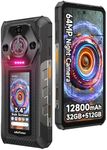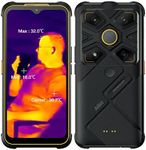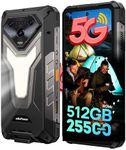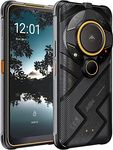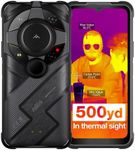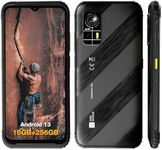Buying Guide for the Best Rugged Smartphones
Rugged smartphones are designed to withstand harsh environments and rough handling, making them ideal for outdoor enthusiasts, construction workers, or anyone who needs a durable device. When choosing a rugged smartphone, it's important to consider the specific conditions you'll be using it in and the features that are most important for your needs. Understanding the key specifications will help you make an informed decision and ensure that the phone you choose can handle the challenges you throw at it.Durability Rating (IP and MIL-STD)Durability ratings like IP (Ingress Protection) and MIL-STD (Military Standard) indicate how well a smartphone can withstand dust, water, and shock. The IP rating consists of two numbers; the first indicates protection against solids like dust, and the second against liquids. For example, IP68 means the phone is dust-tight and can be submerged in water. MIL-STD-810G is a military standard that tests devices against various environmental conditions like temperature, shock, and vibration. If you work in extreme conditions or enjoy outdoor activities, look for higher IP ratings and MIL-STD compliance to ensure your phone can handle the environment.
Battery LifeBattery life is crucial for rugged smartphones, especially if you are away from power sources for extended periods. Battery capacity is measured in milliampere-hours (mAh), and a higher number generally means longer battery life. For rugged use, consider a phone with at least 4000mAh, but if you plan to use power-intensive apps or features, look for 5000mAh or more. Your choice should depend on how long you need the phone to last between charges and whether you have access to charging facilities.
Display ProtectionDisplay protection refers to the screen's ability to resist scratches and impacts. Many rugged smartphones use Gorilla Glass or similar toughened glass to protect the display. The level of protection varies, with higher numbers (e.g., Gorilla Glass 5 or 6) offering better resistance. If you frequently drop your phone or work in environments with sharp objects, opt for a phone with the highest level of display protection available to minimize the risk of screen damage.
Performance (Processor and RAM)Performance in a rugged smartphone is determined by the processor and RAM, which affect how smoothly the phone runs apps and multitasks. Processors range from basic to high-performance, with more cores and higher clock speeds offering better performance. RAM, measured in gigabytes (GB), helps with multitasking; more RAM means the phone can handle more apps at once. If you use demanding apps or need to multitask frequently, look for a phone with a mid-range to high-end processor and at least 4GB of RAM.
Camera QualityCamera quality in rugged smartphones can vary, but it's important if you need to document work or capture outdoor adventures. Look at the megapixel count for both the front and rear cameras, but also consider features like low-light performance, image stabilization, and additional lenses (wide-angle, macro). If photography is important to you, choose a phone with a higher megapixel count and advanced camera features to ensure you can capture high-quality images in various conditions.
Connectivity OptionsConnectivity options include features like 4G/5G support, Wi-Fi, Bluetooth, and GPS. These are essential for staying connected and navigating in remote areas. 5G offers faster internet speeds, which can be beneficial if you need to download large files or stream content. GPS is crucial for navigation, especially in outdoor settings. Consider your connectivity needs based on how you plan to use the phone and ensure it supports the necessary technologies for your activities.
